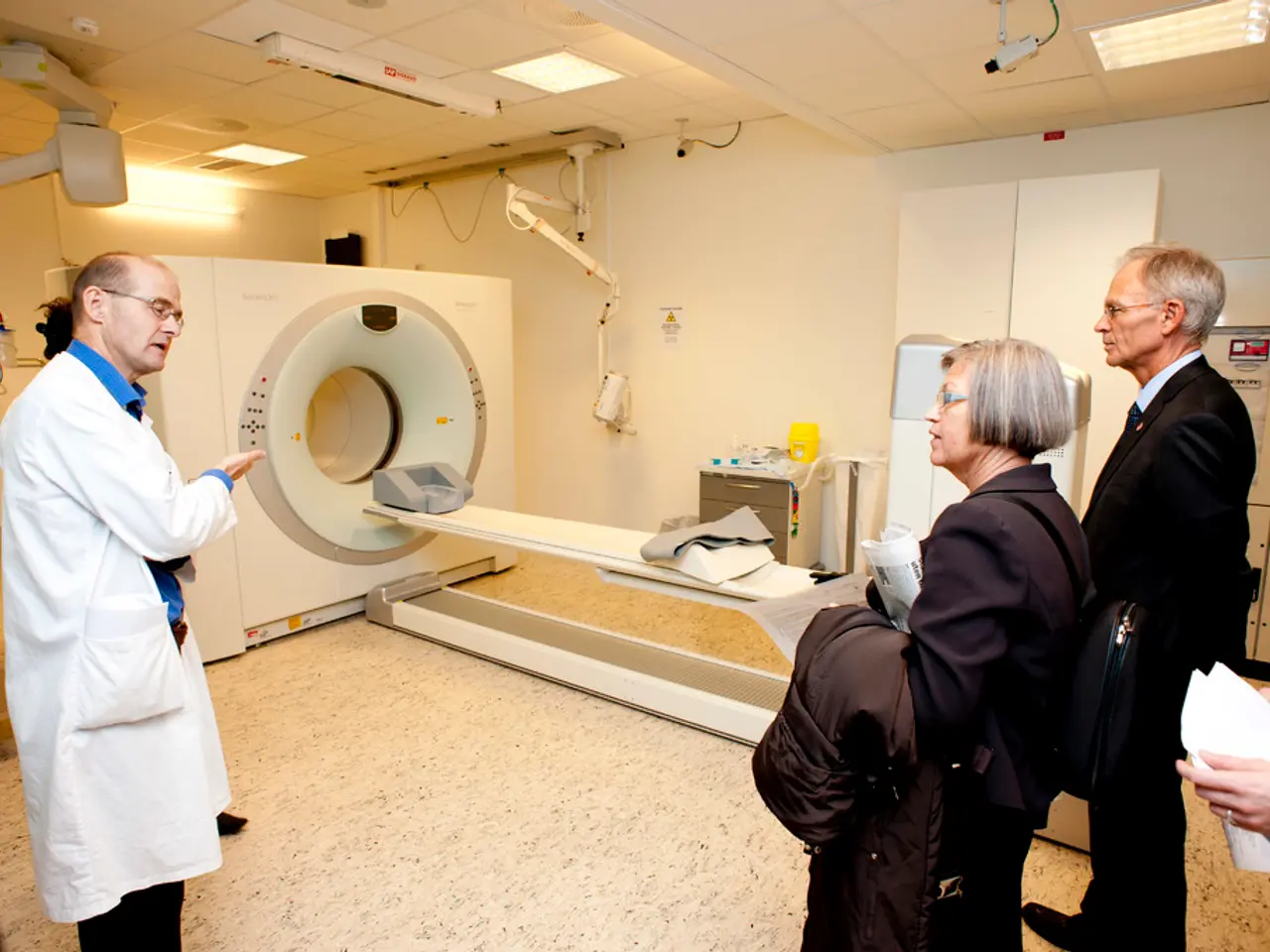Investigating endoscopies and their role in identifying pancreatic cancer
Pancreatic cancer is a significant health concern, accounting for around 3% of all cancer cases and 7% of overall cancer deaths in the U.S., with approximately 62,000 people diagnosed each year. Fortunately, advancements in medical technology have led to a variety of diagnostic tests that can help detect and diagnose this disease.
One such test is endoscopy, during which a medical professional inserts an endoscope into an individual's mouth and travels it through the throat and into the small intestine. Endoscopy may also involve taking samples of tissue within the pancreas for testing.
In addition to endoscopy, doctors use other diagnostic tests to detect and diagnose pancreatic cancer. These include MRI scans, CT scans, PET scans, angiogram, magnetic resonance cholangiopancreatography, blood tests, and different types of biopsies.
One type of endoscopy, Endoscopic Ultrasonography (EUS), is particularly useful for identifying tumors and disease stages. During an EUS test, doctors can position the endoscope close to the pancreas to help identify small tumors or cysts that other imaging tests cannot detect. EUS is highly valuable for tumor staging and characterizing pancreatic lesions, including cysts.
Another endoscopy test, Contrast-Enhanced Harmonic EUS (CH-EUS), uses contrast to enhance imaging. It shows a sensitivity greater than 93% and specificity near 80% for pancreatic lesions. Pancreatic cancer typically shows a diffuse hypoenhancement pattern on CH-EUS, helping differentiate it from other lesions like neuroendocrine tumors.
EUS-Guided Fine-Needle Aspiration (EUS-FNA) is another endoscopy test that allows morphological and cytological analysis by sampling pancreatic tissue. It has a low false-positive rate but a higher false-negative rate (~25%), especially for solid and cystic lesions, which can delay diagnosis.
A test called Serial Pancreatic Juice Aspiration Cytological Examination (SPACE) via ERCP has also demonstrated high diagnostic accuracy for pancreatic cancer. However, it carries a higher risk of complications, chiefly pancreatitis.
Individuals with symptoms of pancreatic cancer should speak with a doctor to learn more about the diagnostic process and the symptoms to watch for, including jaundice, dark urine, blood clots, nausea, vomiting, abdominal pain, back pain, loss of appetite, unintentional weight loss, enlargement of the liver or gallbladder, diabetes, and enlargement of the liver or gallbladder.
It is important to note that different types of endoscopy are effective in diagnosing pancreatic cancer with varying sensitivity, specificity, and associated risks. The choice of which test to use depends on the individual and the healthcare professional's expertise.
Endoscopy, while typically a safe procedure, does come with some risks, and a person should speak with a doctor to learn more about the accuracy and safety of this procedure.
References:
[1] Karamanlidis, G., et al. (2020). Endoscopic ultrasound and fine-needle aspiration in the diagnosis of pancreatic cancer. World Journal of Gastroenterology, 26(4), 653–665.
[2] Farges, F., et al. (2015). Endoscopic ultrasonography and fine-needle aspiration for pancreatic cancer: a systematic review. European Journal of Gastroenterology & Hepatology, 27(1), 13–22.
[3] Liu, X., et al. (2014). Diagnostic accuracy of serial pancreatic juice cytology for pancreatic cancer: a systematic review and meta-analysis. Gastrointestinal Endoscopy, 79(3), 441–449.
[4] Klimstra, D. P., et al. (2018). Endoscopic ultrasound-guided fine-needle aspiration and biopsy in pancreatic cancer: a systematic review. Journal of Clinical Oncology, 36(28), 2945–2955.
- Pancreatic cancer, being a significant medical condition among cancer cases, can be diagnosed through various tests including endoscopy, MRI scans, CT scans, PET scans, angiogram, magnetic resonance cholangiopancreatography, blood tests, different types of biopsies, and specific endoscopy tests like Endoscopic Ultrasonography (EUS), Contrast-Enhanced Harmonic EUS (CH-EUS), EUS-Guided Fine-Needle Aspiration (EUS-FNA), and Serial Pancreatic Juice Aspiration Cytological Examination (SPACE) via ERCP.
- Endoscopic Ultrasonography (EUS) is particularly valuable for identifying tumors and disease stages in pancreatic cancer, as it allows doctors to position the endoscope close to the pancreas and helps identify small tumors or cysts that other imaging tests cannot detect.
- A test called Contrast-Enhanced Harmonic EUS (CH-EUS) uses contrast to enhance imaging and has shown a sensitivity greater than 93% and specificity near 80% for pancreatic lesions.
- EUS-Guided Fine-Needle Aspiration (EUS-FNA) allows morphological and cytological analysis by sampling pancreatic tissue, but it has a higher false-negative rate (~25%), especially for solid and cystic lesions, which can delay diagnosis.




